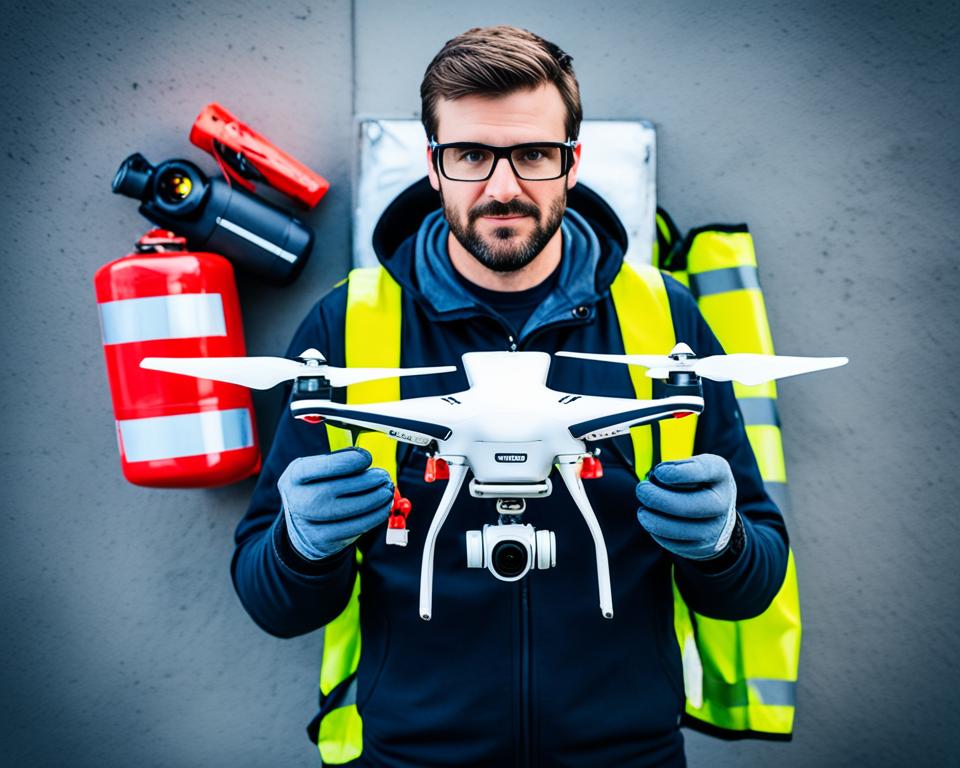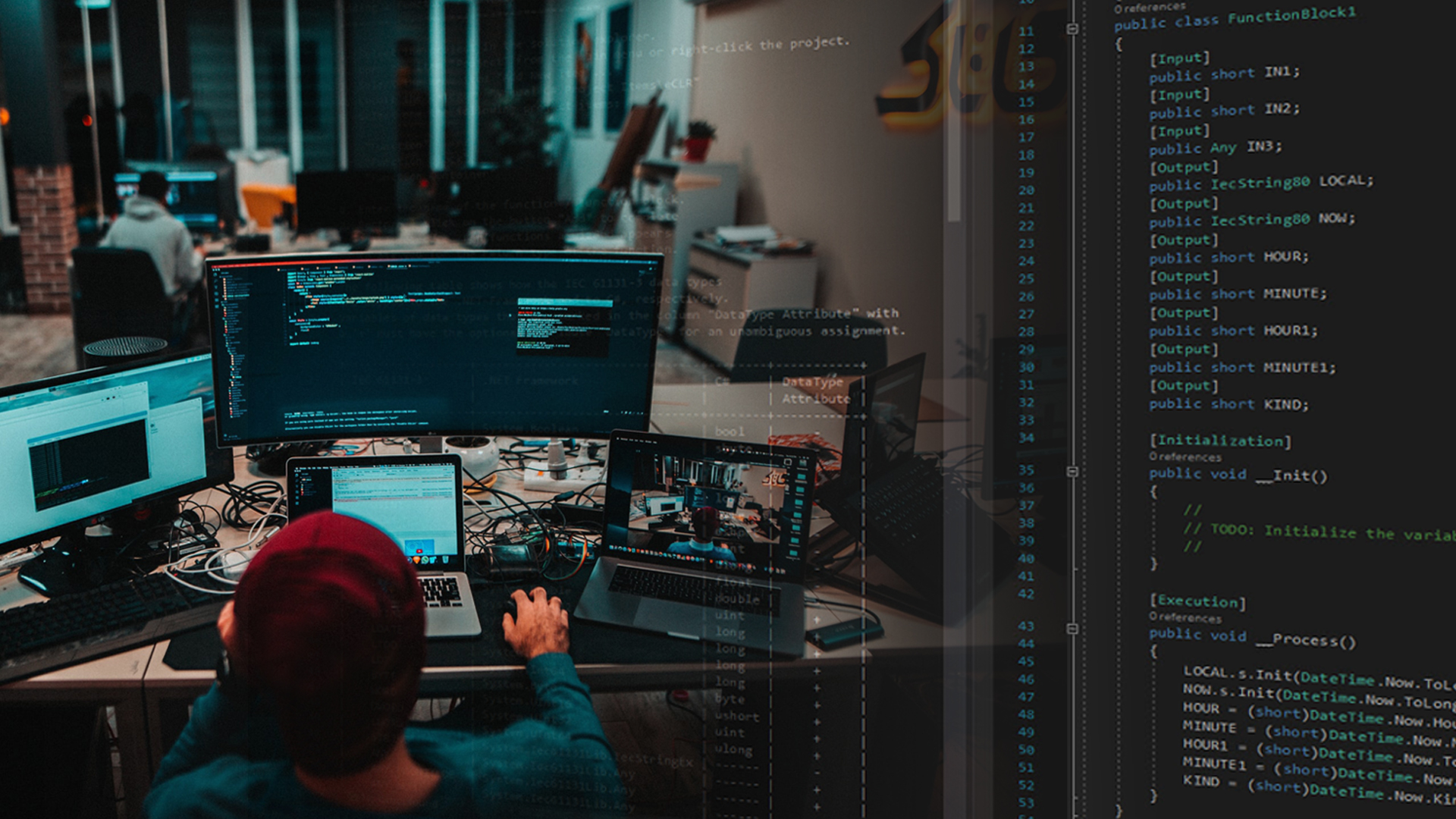
Did you know the drone market could hit $42.8 billion by 2027? Drones are used for flying cameras, scientific research, and even delivering packages. If you want to build your own drone, you’re in the right spot!
This guide will teach you everything from scratch. It’s perfect for beginners or experts wanting to make a custom drone. You’ll get all the necessary tips.
We’ll cover everything, from basics to choosing parts, putting them together, and fixing problems. This guide will help you how to build a drone that matches your dreams and takes flight!
Understanding the Fundamentals of Drone Building
Before diving into drone building, grasp the key basics. Understanding the primary components and drone types greatly helps. It ensures you smoothly sail through your building journey. This knowledge is crucial for wise choices as you progress.
The Basics of Drone Components
To build a drone, get to know its parts well. Key components are the frame, motors, propellers, battery, and controller. The frame is its outer structure, giving space and protection to other parts. The motors drive the drone and control its direction. With the propellers, they lift the drone and move it in the air. The battery powers the motors and electronics. And the controller lets you steer your drone.
Different Drone Types and Their Purposes
Know the drone varieties and their unique uses, too. There’s a drone for every purpose in today’s market. For instance, photography drones come with top-notch cameras, perfect for aerial photos and videos. Racing drones are all about speed and excitement, and they are great for racing fans. Delivery drones are changing the game by moving small items fast. By understanding what each type offers, you can pick one that best fits what you want to do with your drone.
Choosing the Right Drone Frame
Selecting the best drone frame is key when you’re making your own drone. It’s like the skeleton of your drone, holding everything together. Think about these factors to pick the perfect frame:
- Material: Drone frames come in different materials, each with its own perks. For top-notch performance, choose a frame made of carbon fiber. If you need yours to be tough and stable, go for aluminum. Plastic frames are a good pick for those on a budget. Think about what you need and can afford for your drone’s frame.
- Size: The drone frame’s size will determine your drone’s overall size and weight. If you want a quick and nimble drone, go for a smaller frame. Larger frames can hold more stuff, like cameras and other parts. Suit the drone’s size to its purpose and where you’ll fly it.
- Design and Features: Look at different drone frame designs and the features they offer. Good frames let you mount parts and cameras easily. Look for things like vibration control, protective parts, and easy ways to reach inside. These features can make your drone work better and be easier to use.
Thinking about these points will help you find the best frame for your drone. You might want one that’s light, tough, or very adaptable. Whatever your main goal is, the right frame is vital for a drone that flies well.
Selection of Drone Motors and Propellers
Choosing the right drone motors and propellers is key for the best flight and performance. You should look at the size and KV rating of the motors. Make sure the propellers you choose match the motors for the best efficiency and flight.
Determining the Optimal Motor Size and KV
Motors vary in size based on the stator and magnet height. The size directly affects the drone’s power and efficiency. You should decide the motor size based on your drone’s weight and how you want it to fly.
The KV rating shows how fast the motor spins per volt. Higher KV motors are quicker but have less power. Lower KV motors are slower but stronger. The KV rating affects your drone’s speed and agility. For a fast racing drone, go for a higher KV motor. For efficiency and longer flights, choose a lower KV motor.
Matching Propellers to Motor Specifications
It’s critical to pick the right propellers for your motor to achieve the best power transfer and stability. Choose propellers that fit well with your motor’s specs for good flight performance.
Propeller size is about the length of the blades, measured in inches. Bigger propellers create more thrust and are good for heavier drones or photography. Smaller propellers work well for light or agile drones. Always check which propeller size matches your motor.
The propeller pitch is crucial too. Pitch is the theoretical distance a propeller travels in one spin. Higher pitch gives more thrust but uses more power. Lower pitch improves efficiency and flight time. Pick the right pitch based on your drone’s weight, motor power, and how you want it to perform.
Power Systems: Batteries and Electronic Speed Controllers
Two important parts of your drone’s power system are batteries and electronic speed controllers (ESCs). Picking the right batteries and knowing how ESCs work is vital. This helps make sure your drone performs perfectly, and you control it well.
Types of Batteries and Understanding Capacity
Picking the best batteries is crucial for great drone performance. Most drones use lithium polymer or LiPo batteries. They’re popular for their high power and lightweight. You should look at battery capacity, voltage, and discharge rating when choosing. More capacity means longer flights. And higher discharge ratings mean more power. Make sure the batteries you choose work well with your drone for top performance.
ESC Functionality and Calibration
Electronic speed controllers (ESCs) manage your drone’s motor speed. They change battery power to control how fast the motors turn. It’s key to know how ESCs work for good motor control and managing power. Calibrating ESCs is also important. This ensures the motors turn at the right speed based on how you use the throttle. Calibration means setting up the ESCs as the maker suggests, using the right tools.
Flight Controllers: The Brain of Your Drone
The flight controller is like the “brain” of a drone. It keeps the drone acting and moving right. Picking the right controller is important. You have lots of choices for different needs and what you like.
Various Flight Controller Options and Features
Drone flight controllers come in many types and have different features. Here are some top options:
- 1. MultiWii: Great for newcomers, it gives basic flight control and stability.
- 2. Naze32: Good for those more experienced, it has GPS for navigation and keeps its height.
- 3. DJI A3: Best for pro drones, it has strong stabilization and can fly on its own precisely and independently.
When you pick a flight controller, think about how many input and output channels it has. Also, think about if it matches the other parts of your drone well. Making sure it’s easy to set up and update is also key. Choose one that meets your skills and fits what your drone project needs.
Calibrating and Configuring Your Flight Controller
After choosing the right flight controller, it’s important to set it up correctly. This ensures your drone works well and is stable.
Calibrating means adjusting the controller’s sensors, like the gyroscope. You make sure they get the drone’s position and movements right. This way, your drone is more likely to keep steady when you’re flying it.
Configuring is about setting the right software options. For example, changing the PID settings can make your drone respond better to how you control it. These settings are important for how smooth and steady the drone flies.
Every flight controller needs its own way to calibrate and configure, often through a computer program. Always check the manual or guides online for the specific steps on setting up your controller.
Getting the calibration and configuration right is crucial for a smooth and accurate flight. Take your time to learn and tweak your controller. It will make your drone a joy to fly.
How to Build a Drone – The Assembly Process
Once you pick all the components, it’s time to assemble. Follow these simple steps for an easy and successful build.

1. First, clear a space for work. Ensure there’s enough room for everything you need.
2. Read the drone kit’s guide. This helps you understand where each piece goes.
3. Start connecting the pieces together. Hook up the flight controller, ESCs, and motors. Make sure all connections are tight.
4. Now, attach these parts to the frame. Check they’re straight and make them secure.
5. Put the propellers on the motors. They should be on snugly, not too loose or too tight.
6. If needed, add the landing gear. This keeps your drone safe during landing.
7. Double-check all your wiring. Ensure they’re neat and don’t tangle.
8. Place the battery where it belongs and make sure it can’t move.
9. Look at your drone as a whole. If something seems off, fix it.
10. Look closely at solder points and wiring. Everything must be solid and safe.
11. Great job! Your drone is now ready.
Using these steps, you can build your drone. Always follow your kit’s guide closely. This brings you closer to flying your own drone.
Firmware and Software Configuration
Assembling your drone is just the start. Next, you need to update the firmware on its controller. This step is crucial for getting the latest features and fixing bugs. It makes sure your drone flies smoothly and safely.
Configuring the software settings is as important as updating the firmware. You can set up flight patterns and behaviors. This customization helps match the drone’s flight style to yours.
With the right software settings, you can adjust throttle, stabilization, and GPS. This customization helps you get the best out of your drone. It makes your flying experience more fun.
Installing and Updating Firmware
Updating firmware varies with different controllers. Normally, you download new firmware from the maker’s site. Then, you use a program to update the controller.
To install, connect the controller to your PC with a USB. Run the firmware program and follow the maker’s guides. It’s key to do this right to avoid problems.
For updates, ensure a good internet connection. Follow the maker’s steps carefully. Don’t interrupt the update, and always back up your settings first.
Programming the Flight Patterns and Behaviors
To customize flight patterns, use the software from the controller maker. This lets you adjust throttle curves, PID settings, and flight behaviors.
You can set your drone to fly differently in various modes. For example, acro mode responds to your exact controls for tricks. Stability mode helps beginners by auto-leveling the drone.
You can also fine-tune how the drone reacts to flying conditions. Set throttle response, angle limits, and stabilization. This tweaking makes your drone fly just how you want.
Remote Control and Receiver Setup
Starting with the remote control and receiver setup is key for your drone. Just follow these simple steps:
- First, make sure both your drone and remote are charged up. They need to be ready to pair.
- Next, find the receiver slot on your drone. It’s often on the main controller board.
- Then, insert the receiver carefully into the slot. It should fit snugly.
- Turn on your remote next. Go to the settings menu as well.
- In the settings, you’ll see “Transmitter and Receiver Pairing” or something like that. Click it.
- Follow the instructions shown to pair your devices. This might involve pressing buttons.
- After pairing, both your remote and receiver should show a successful connection. Look for a light or message.
- With the remote and receiver paired, it’s time to calibrate the remote. This makes control smooth and accurate.
- Use the remote’s manual for calibration steps. You might need to move sticks and follow screen prompts.
- After calibration, you’re set to fly your drone. Always fly safely and follow rules. Enjoy your flight!
First Power-Up and Safety Protocols
Before the first flight of your drone, it’s key to do checks. These will find problems early to keep you and your drone safe. Follow these safety steps and rules for a good first flight and safe flying later on.
Conducting Pre-flight Checks
Doing pre-flight checks is vital for safe flying. You should look over your drone carefully each time before you fly it. This ensures you catch any problems before they cause trouble. Here are the main checks you should do:
- Check the battery: Make sure it’s fully charged and not damaged.
- Inspect motor rotation: See that all motors spin correctly. Look out for strange sounds or feels.
- Verify flight controller response: Make sure the controller works with the drone like it should.
- Verify overall system functionality: Test every part, like the camera and GPS, to make sure they work right.
These checks make flying safer and more fun. By doing them, you lessen the chance of surprises during your flight.
Understanding Safety Guidelines and Regulations
Knowing and following rules is at the core of flying a drone well. Make sure you know the laws where you fly. Here are some important rules to keep in mind:
- Observe no-fly zones: Don’t fly in areas where it’s not allowed.
- Maintain visual line of sight: Always see your drone when it’s in the air.
- Stay away from people and property: Keep your drone away from busy areas and private land to avoid harm.
- Respect privacy: Don’t record or fly close over someone’s property without permission.
- Register your drone: In some places, it’s required by law to register your drone.
By knowing and following these rules, you can enjoy flying your drone while keeping others and the environment safe.

Testing and Calibration: Fine-Tuning Your Drone
After the first power-up and checks, it’s time to up your drone game. Testing and calibrating are key to making your drone work the best it can. Tweak settings, balance motors and propellers, and make the flight smooth. This makes your drone stable and reliable.
First, test your drone by flying it in different ways. This helps you spot any issues that need fixing.
Calibration is vital for your drone’s flight controller. This makes sure it’s accurate and stable. It involves setting up the controller’s sensors to understand your commands better. Doing this improves the drone’s performance and how well it reacts.
To get your controller right, use the maker’s software. Then, follow their steps to calibrate sensors like the accelerometer and compass. Do this in a place without magnetic interference to get accurate results.
Don’t forget about the motors and propellers. Balanced ones are key to cutting down on shakes and improving stability. Tools for motor balancing or a propeller balancer can help with this.
Make small adjustments and test after each one when fine-tuning. This helps you see the effect of your changes. With this approach, you can keep making your drone better for a great flying experience.
Troubleshooting Common Drone Building Issues
Building a drone can be tricky. You might face challenges along the way. But, knowing how to solve these issues is key. In this part, we’ll show you tips and fixes for common drone-building problems.
Wiring Problems
Wiring issues are often found by drone builders. These can be due to loose connections, bad soldering, or wires that are not in good shape. To tackle wiring problems, check all your connections closely. Make sure they are snug and well-soldered. Swap out any bad wires for new ones. Using heat shrink tubing on the wire ends is a good idea to keep them safe.
Motor Control Issues
If your motors are acting up, troubleshoot by looking at the connections. It’s important that the flight controller and the ESCs are attached correctly. Check that the signal wires are in the right place. Also, make sure the ESCs and motors are calibrated properly. The motor direction in the flight controller software must be set right.
Flight Stability Problems
Having a stable drone is key for safe flying. If your drone isn’t stable, it could be because of unbalanced propellers. Make sure the propellers are tight and not damaged. Unbalanced propellers create vibrations that mess with stability. You should also recalibrate the flight controller and ensure your drone’s center of gravity is correct.
Software-Related Problems
Software problems can pop up when setting up your flight controller or when updating its firmware. If you face these problems, make sure your flight controller has the latest firmware. If you’re still having issues, updating or contacting the manufacturer might help. Always follow the software setup steps the maker recommends for the best results.
Working through these common drone issues will help you build a drone that works well. Remember to go slow and ask for help if you need it. Online communities and forums are great for getting advice. Good luck with your build!
Building a drone is an exciting journey. It lets you show your creativity and skill. This guide has shown you how to make a drone step by step. You’ve learned everything from the basics to solving problems.
As you start building, take your time. Enjoy what you’re doing. Making a drone is not quick, but the result is amazing. Pick the right parts, put them together carefully, and set up the software. This way, your drone will work great and be a lot of fun to fly.
Before flying your drone, know the safety rules. This is very important to stay safe and to keep others safe, too. Follow these rules and any laws about drones. Then, you can have fun with your drone, knowing you’re being responsible.
In the end, making your own drone is fun and learning. With this guide, you’re ready to start. Now, it’s your turn to make your dream drone. Prepare to enjoy the freedom of flying your drone. There’s a lot to explore up there!k
FAQs
What are the basic components of a drone?
A drone’s basic parts are the frame, motors, propellers, battery, and controller.
How do I choose the right drone frame?
Choose a drone frame that fits your needs. Look at the material, size, and design.
What should I consider when selecting drone motors and propellers?
Think about motor size and KV rating. Make sure the propellers match your motor.
What do I need to know about drone power systems?
Knowing the right battery type and capacity is key. Understand how ESC works for power.
What is a flight controller, and how do I choose the right one?
A flight controller acts as the drone’s brain. Learn about your options and how to set it up.
What is the assembly process for building a drone?
Assemble your drone by wiring and connecting parts. Then, mount them on the frame.
How do I install and update the firmware on a drone?
Installing and updating the firmware keeps your drone up to date with new features.
How do I set up the remote control and receiver for my drone?
Start by setting up your remote control. Install the receiver and pair it with the transmitter.








